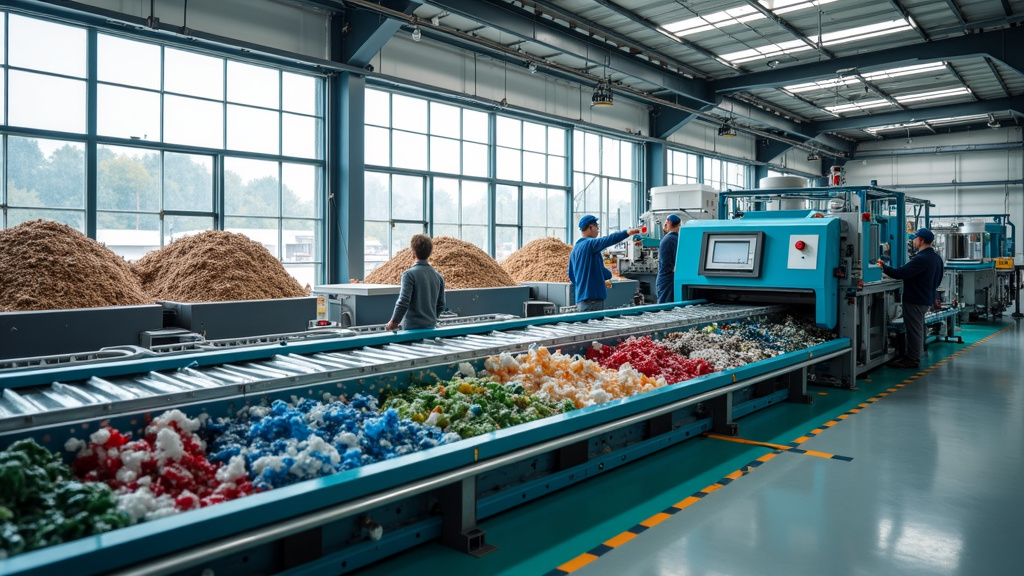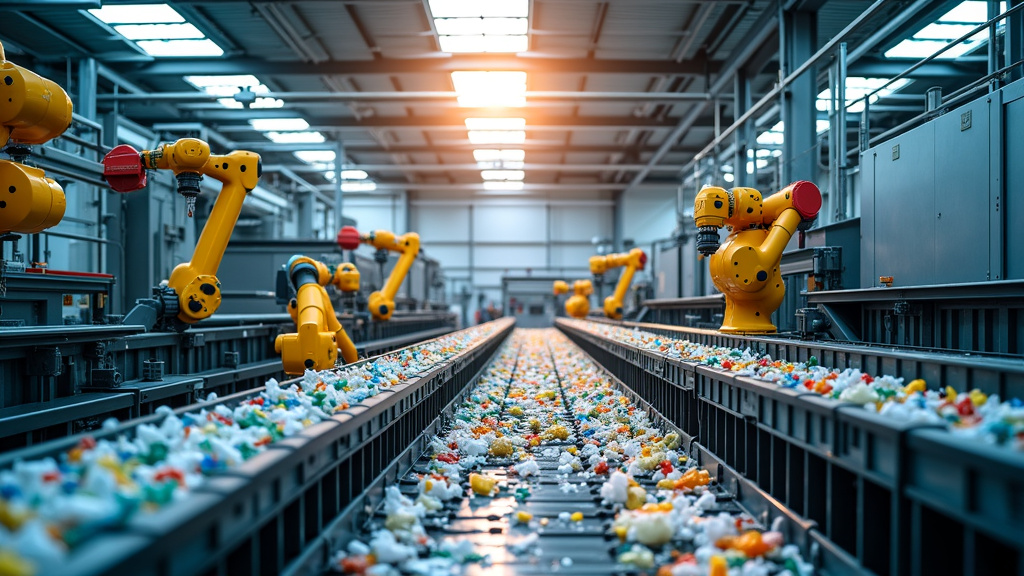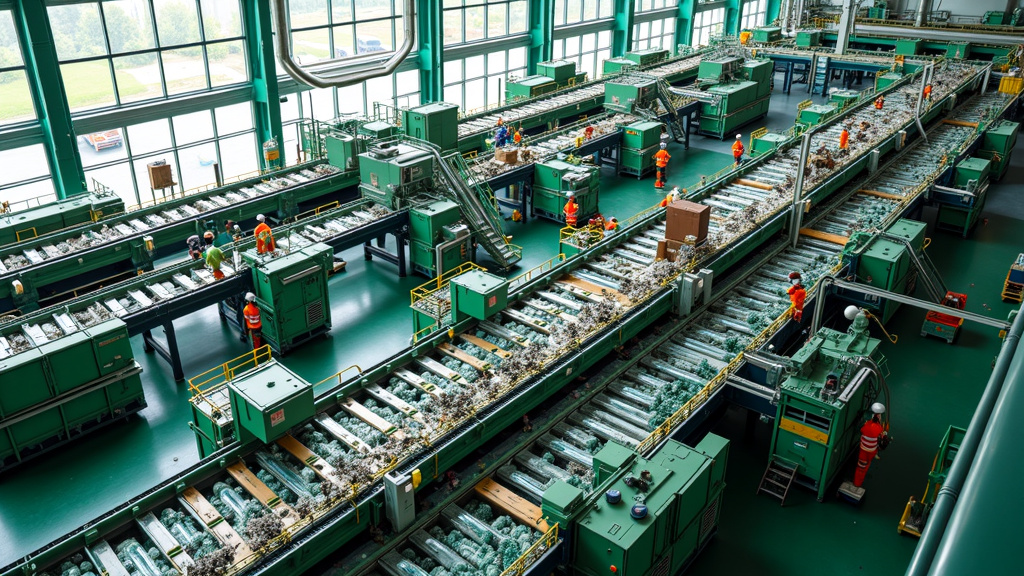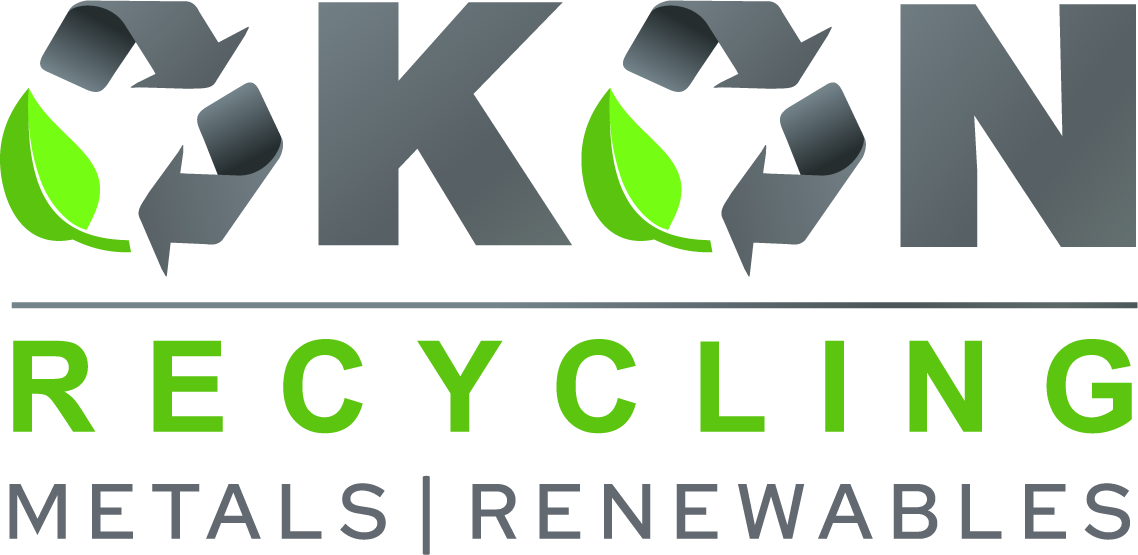5901 Botham Jean Blvd, Dallas, TX 75215
Measuring Recycling Success: Key Metrics and Strategies
February 11, 2025Imagine a world where every discarded item is repurposed, where landfills shrink instead of grow, and where communities thrive thanks to sustainable practices. This vision can become reality through effective recycling measurement.
But how do we gauge success in waste management?
The key lies in tracking Key Performance Indicators (KPIs) like recycling rate, material recovery rate, and cost per ton recycled. These metrics guide efficiency improvements and pinpoint where resources are best allocated. San Francisco, for example, reached an impressive 80% waste diversion rate by meticulously measuring and refining its recycling strategies—proof that measurement fuels tangible progress.
Why does it matter? You can’t improve what you don’t measure.
By adopting robust metrics, communities and businesses can identify bottlenecks, highlight achievements, and continually enhance their waste management efforts. The outcome: a more circular economy, reduced environmental impact, and potential cost savings.
In the following sections, we’ll explore how these KPIs are turning recycling from a cumbersome task into a powerful driver of sustainability.
Key Performance Indicators for Recycling Facilities

Recycling facilities play a crucial role in waste management and resource conservation. To ensure these facilities operate efficiently, industry leaders rely on Key Performance Indicators (KPIs) to gauge performance and drive continuous improvement. Here are the essential metrics that keep recycling operations running smoothly and sustainably.
The recycling rate is a fundamental KPI, measuring the percentage of waste materials successfully diverted from landfills. High-performing facilities often achieve recycling rates exceeding 50%, setting a benchmark for the industry. For instance, EcoCycle Solutions, a leader in innovative recycling techniques, achieved a remarkable 75% recycling rate in 2023, demonstrating the potential for exceptional performance when best practices are implemented.
Another critical metric is the cost per ton recycled. This financial KPI provides insights into operational efficiency and helps facilities optimize their processes. According to recent industry data, the average cost per ton recycled ranges from $50 to $200, depending on the complexity of materials processed. Facilities aiming to stay competitive should strive to keep this figure on the lower end through strategic investments in technology and streamlined operations.
The material recovery rate is equally vital, indicating how effectively a facility extracts recyclable materials from the waste stream. This metric not only reflects processing efficiency but also impacts the quality of recycled materials produced. A study by the Environmental Protection Agency found that facilities with material recovery rates above 80% tend to produce higher-grade recycled materials, commanding better prices in the market.
| Facility | Recycling Rate (%) | Cost Per Ton Recycled ($) | Material Recovery Rate (%) |
|---|---|---|---|
| EcoCycle Solutions | 75 | 50-200 | 80+ |
| San Francisco City | 80 | ||
| Recycle America | Improved by 15% |
Best Practices for Implementing KPIs
To maximize the benefits of KPI tracking, recycling facilities should adopt several best practices. Regular KPI reviews are essential, with leading facilities conducting monthly or quarterly assessments to identify trends and address issues promptly. These reviews often involve cross-functional teams, ensuring a holistic approach to problem-solving and improvement.
Moreover, successful facilities integrate KPI data into their decision-making processes. For example, when Recycle America, a mid-sized facility in the Midwest, noticed a dip in their recycling rate, they used KPI insights to implement targeted community education programs. Within six months, their recycling rate improved by 15%, showcasing the power of data-driven strategies.
Benchmarking against industry standards is another crucial practice. By comparing performance metrics with peers, facilities can identify areas for improvement and set realistic targets. The Recycling Partnership, a national nonprofit, provides valuable benchmarking data that facilities can use to assess their standing in the industry.
Emerging Trends in Recycling KPIs
As the recycling industry evolves, so do the KPIs used to measure success. Environmental impact scores are gaining traction, quantifying a facility’s contribution to reducing greenhouse gas emissions. Additionally, customer satisfaction metrics are becoming increasingly important, reflecting the growing emphasis on community engagement in recycling efforts.
In conclusion, Key Performance Indicators are indispensable tools for recycling facilities striving for excellence. By meticulously tracking metrics such as recycling rate, cost per ton recycled, and material recovery rate, facilities can fine-tune their operations, reduce waste, and contribute to a more sustainable future. As we move towards a circular economy, the role of these KPIs in shaping efficient, environmentally responsible recycling practices cannot be overstated.
Evaluating the Recycling Rate

The recycling rate is a crucial metric in the waste management industry, providing insights into a facility’s performance and environmental impact. This key performance indicator (KPI) measures the percentage of waste successfully diverted from landfills and processed for recycling, relative to the total waste generated.
What defines a ‘good’ recycling rate? Industry standards suggest an optimal range between 30% and 50%, though this can vary based on several factors. Material types play a significant role – for example, metals and paper often achieve higher recycling rates compared to plastics. Additionally, local and national regulations can influence these benchmarks.
To illustrate, let’s examine some real-world figures. According to the Environmental Protection Agency, the national recycling rate in the United States has been around 32% in recent years. While this is within the ‘optimal’ range, it also highlights significant room for improvement.
Calculating your facility’s recycling rate is straightforward yet crucial. The formula is:
Recycling Rate = (Total Recycled Materials / Total Waste Generated) x 100
For example, if your facility generates 1000 tons of waste and successfully recycles 400 tons, your recycling rate would be 40% – within the industry-standard range.
However, it’s important to remember that the recycling rate, while significant, doesn’t tell the whole story. Other factors, such as contamination rates and the quality of recycled materials, also play crucial roles in assessing a facility’s overall performance.
How can facilities improve their recycling rates? Here are a few strategies:
- Implement comprehensive sorting systems to maximize material recovery
- Educate staff and consumers about proper recycling practices
- Invest in advanced recycling technologies
- Collaborate with local businesses to create closed-loop recycling systems
The journey towards optimal recycling rates is ongoing. By consistently monitoring this KPI and implementing targeted improvements, facilities can not only enhance their performance metrics but also contribute significantly to global sustainability efforts. In waste management, every percentage point counts!
| Material | Recycling Rate (%) |
| Paper | 68 |
| Cardboard | 93 |
| Aluminum Cans | 45.2 |
| PET Bottles | 29.1 |
| Glass | 31.3 |
| Steel Cans | 71.3 |
Importance of Waste Diversion Rate

The waste diversion rate is a critical metric in modern waste management, measuring the percentage of waste redirected from landfills through recycling or composting efforts. This key indicator reflects a community’s commitment to sustainability and its progress towards a circular economy. Achieving a high diversion rate, typically above 50%, signifies effective waste management practices that reduce environmental impact and conserve valuable resources.
Why is the waste diversion rate so important? It directly correlates with reduced landfill usage. Landfill diversion is crucial for protecting our environment, as it helps conserve natural resources, lower greenhouse gas emissions, and minimize pollution. Every item recycled or composted reduces the burden on our overflowing landfills.
Moreover, a high waste diversion rate supports the transition to a circular economy. This economic model aims to eliminate waste and maximize resource efficiency by keeping materials in use for as long as possible. By diverting waste from landfills, we’re not just disposing of less; we’re creating opportunities for materials to be reused, repurposed, or transformed into new products.
Strategies to Improve Waste Diversion Rates
Improving waste diversion rates requires a multi-faceted approach. Here are some effective strategies that communities and organizations can implement:
- Education and Awareness Campaigns: Inform residents and employees about proper waste sorting and the importance of recycling and composting.
- Optimize Recycling Infrastructure: Ensure convenient access to well-labeled recycling and composting bins throughout communities and workplaces.
- Incentivize Participation: Offer rewards or recognition for high recycling rates to encourage active participation in waste diversion efforts.
- Implement Source Reduction: Focus on reducing waste generation at the source, such as minimizing packaging or choosing reusable alternatives.
- Partner with Waste Management Experts: Collaborate with professional services to streamline collection processes and enhance recycling initiatives.
One innovative approach gaining traction is the use of smart technology in waste management. Smart bins equipped with sensors can optimize collection routes and monitor waste levels in real-time, improving efficiency and encouraging proper waste segregation.
Remember, achieving a high waste diversion rate is not just about meeting a number—it’s about fostering a culture of sustainability. By embracing these strategies and continuously educating ourselves and others, we can make significant strides in reducing our environmental footprint and moving towards a more sustainable future.
As we strive to improve our waste diversion rates, it’s crucial to recognize that every action counts. Whether you’re an individual, a business owner, or a community leader, your efforts in proper waste sorting and reduction contribute to the larger goal of sustainability. Together, we can create a cleaner, greener world for future generations.
| City | Waste Diversion Rate | Key Initiatives |
|---|---|---|
| San Francisco, CA | 80% | Mandatory Recycling and Composting Ordinance |
| Fort Collins, CO | 51.1% | Road to Zero Waste Plan |
| Austin, TX | 75% (2020 target) | Austin Resource Recovery Master Plan |
| Oakland, CA | 90% (target) | Zero Waste Strategic Plan |
| Seattle, WA | 70% (2022 target) | Zero Waste Resolution |
| New York City, NY | Zero Waste Act | Zero Waste Act |
Conclusion: Enhancing Recycling Success

Measuring recycling success through clear, quantifiable KPIs is more than just tracking data—it’s a strategic approach to improving efficiency, ensuring regulatory compliance, and maximizing environmental impact. By monitoring key metrics like recycling rates, diversion percentages, and cost per ton, facilities can refine their processes, reduce waste, and drive long-term sustainability.
Beyond operational benefits, KPIs serve as a bridge between daily waste management efforts and broader environmental goals. They help identify inefficiencies, highlight opportunities for innovation, and support the transition to a more circular economy.
Companies like Okon Recycling are at the forefront of this movement, using advanced technologies—such as AI-driven sorting systems and real-time data analytics—to enhance recycling efficiency and resource recovery.
As the recycling industry evolves, embracing KPI-driven strategies will be crucial for staying competitive and meeting sustainability targets. Whether you’re looking to optimize waste diversion, improve cost-effectiveness, or implement new recycling technologies, Okon Recycling has the expertise and solutions to help.
Take the next step toward smarter recycling. Call Okon Recycling at 214-426-6566 to learn how their innovative approach can elevate your recycling efforts and drive a more sustainable future.
